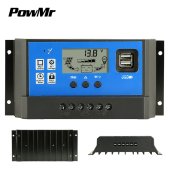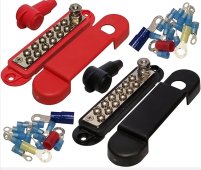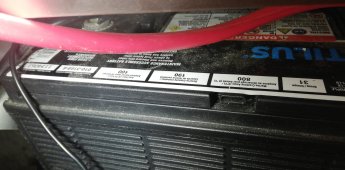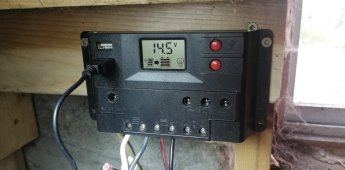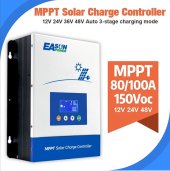Hello.
I'm new here.
My name is Jeremy.
I live near Toronto Ontario, Canada.
My wife and I purchased our first home in 2014.
9 years later, there are now 5 of us.
I've been enjoying learning about VAN LIFE and TINY HOMES.
Most of these individuals use solar.
So, I thought I'd look into it.
I stared with a basic set up.
1x 100watt panel from the hardware store.
1 deep cycle battery (I bought the most expensive one they had, at $300. Dude claimed I'd get 3 hours out of it. He must have meant powering a lamp or something).
1x 2000watt power inverter.
I kept this setup for about a month, but was disappointed the solar remote display would always display volts in the 10.9-11.5 zone.
I couldn't even run a hot plate with it.
I ended up finding a guy online selling 230 watt panels.
I bought 1 off him as a test.
So, having 330 watts, plus more sun, as we enter spring has helped the battery charge up to 14.5v.
I've since purchased 2 more panels, with plans on buying 2 more in a couple months.
I'm now at 800watts.
We've run the hot plate a bunch of times.
A blender. A microwave and the washing machine.
I charge most of my devices with it.
Trying to rely on the grid less and less.
What I'm looking for now is, is there a device which would tell me how many Watts the system is pulling in?
So, on a cloudy day vs sunny day, I'll be able to measure how many Watts are coming in?
Thank you for your time and consideration.
I'm new here.
My name is Jeremy.
I live near Toronto Ontario, Canada.
My wife and I purchased our first home in 2014.
9 years later, there are now 5 of us.
I've been enjoying learning about VAN LIFE and TINY HOMES.
Most of these individuals use solar.
So, I thought I'd look into it.
I stared with a basic set up.
1x 100watt panel from the hardware store.
1 deep cycle battery (I bought the most expensive one they had, at $300. Dude claimed I'd get 3 hours out of it. He must have meant powering a lamp or something).
1x 2000watt power inverter.
I kept this setup for about a month, but was disappointed the solar remote display would always display volts in the 10.9-11.5 zone.
I couldn't even run a hot plate with it.
I ended up finding a guy online selling 230 watt panels.
I bought 1 off him as a test.
So, having 330 watts, plus more sun, as we enter spring has helped the battery charge up to 14.5v.
I've since purchased 2 more panels, with plans on buying 2 more in a couple months.
I'm now at 800watts.
We've run the hot plate a bunch of times.
A blender. A microwave and the washing machine.
I charge most of my devices with it.
Trying to rely on the grid less and less.
What I'm looking for now is, is there a device which would tell me how many Watts the system is pulling in?
So, on a cloudy day vs sunny day, I'll be able to measure how many Watts are coming in?
Thank you for your time and consideration.



